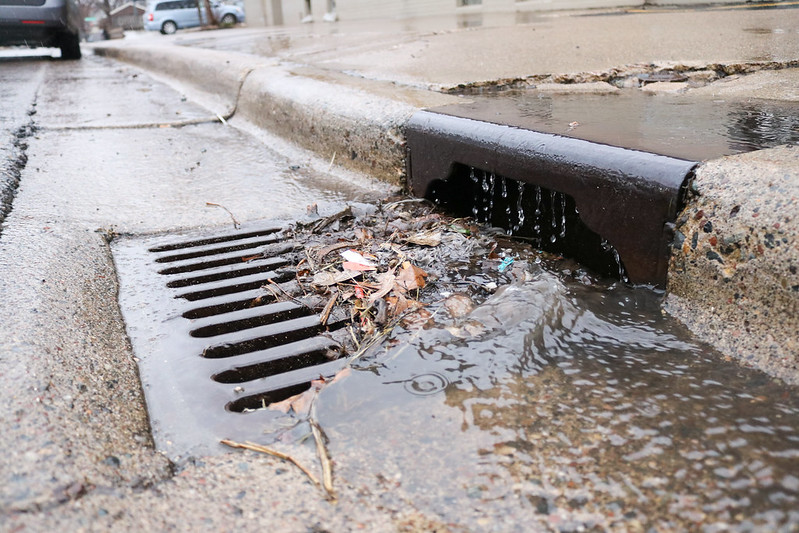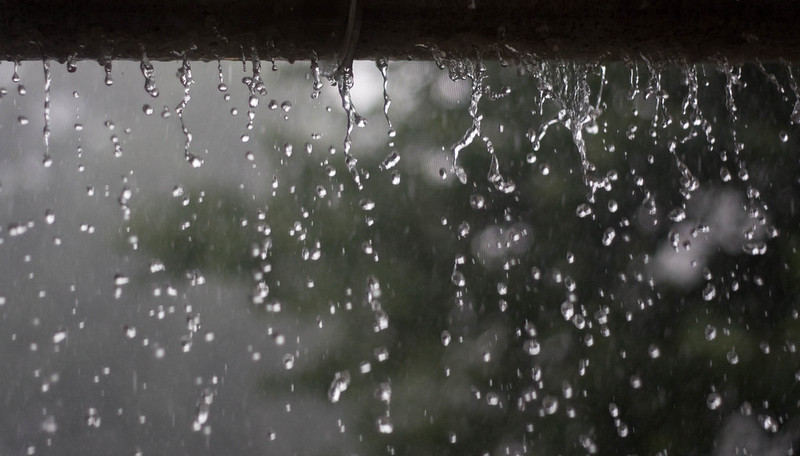When does a groundwater recharge project NOT need a water right?
by Kate Fritz and Nell Green Nylen
Groundwater recharge projects already play an important role in California. That role is about to expand rapidly, as local groundwater managers begin to take more concrete actions to meet their responsibilities under California’s landmark Sustainable Groundwater Management Act (SGMA).
As we mentioned in our last post, an important part of developing a successful recharge project is securing a source of water and the legal right to use it. In that post, we described the surface water right permit options administered by the State Water Resources Control Board (Water Board) that are potentially available for new groundwater recharge projects. We also mentioned the central role of permitting, and water rights oversight more broadly, in ensuring that water diversion and use doesn’t harm other water users or uses.
But is a water right always necessary? Below we explore when a recharge project might not need a water right at all (short answer: it’s complicated…and more than a little unclear)—and why it matters.
Setting the scene
In late January, SGMA’s deadline passed for the first cohort of Groundwater Sustainability Agencies (GSAs) to submit Groundwater Sustainability Plans to the state. These GSAs serve the state’s 21 critically overdrafted groundwater basins. The plans are meant to explain how they will bring local groundwater supply and demand into balance over the next two decades.
Now these GSAs are beginning the hard work of transforming their plans from theory into practice. Many still need to flesh out the details of the projects and management actions they will undertake to fulfill their responsibilities under SGMA. (Meanwhile, GSAs for another 73 medium- or high-priority basins are even earlier in the process. They have another year and a half to go before their plans are due.)
The recently submitted plans give us insights into what kinds of projects GSAs intend to rely on. One thing they make clear: GSAs expect groundwater recharge projects to play a significant role in helping them combat overdraft. For example, a recent analysis of the plans submitted for 11 basins in the San Joaquin Valley suggests many GSAs are hoping that recharge projects (and, to a lesser extent, other means of expanding supply) will obviate the need for extensive demand reduction actions, like imposing pumping restrictions or fallowing land.
The high degree of planned reliance on recharge is likely unrealistic for many reasons, including the fact that, in some cases, different plans assume that different GSAs will be able use to the same water—namely, high flows in the same stream system. Some commentators have suggested addressing this problem by using auctions to allocate the ability to divert high flows for recharge. But that approach is not straightforwardly compatible with California’s water rights system, and it assumes the Water Board has a clear understanding of how much “unclaimed” high flow can be safely diverted at a particular time in a particular watershed. This is manifestly not the case. For example, instream / environmental flow requirements to protect public trust resources have not been established for most California water bodies, and those that do exist are often incomplete, outdated, or have yet to be implemented.
With many entities competing for the same finite water sources (with uncertain availability) to fuel their recharge efforts, interest in alternative water sources is likely to grow.
Acquiring a water right can be an expensive process that lengthens the timeline for moving a water infrastructure project from idea to operation. If a project proponent doesn’t need a water right to use a particular source of water, they can potentially get their project up and running more quickly and cost effectively. Yet, it remains unclear in what contexts a water right is not needed. It is also unclear whether, and how, effective oversight of water used without a water right can occur.
Which water sources might not need water rights?
Some source waters for recharge projects clearly require a water right. If the proposed water source is surface water imported from outside the groundwater basin or taken from a local water body such as a stream, the need for a water right is clear.
But for other water sources, whether a water right is needed is not so clear. For example, does water flowing across rural farmland after a storm into a designated place for recharge require a water right? On one hand, since this water is not in a layperson’s idea of a stream, it does not appear to fall neatly into the requirement for a water right to divert “stream flow.” Could this water be considered “stormwater,” “rainwater,” or “flood water,” which each have their own carveouts from the water rights system? And how much do (or should) the details of the particular case matter?
Here are several different recharge water supply scenarios, along with open questions about whether (or when) each source might—or might not—require a water right.
Scenario 1: “Stormwater”
A GSA wants to use what it considers “stormwater” to supply a recharge project. The water flows off a local hillside and onto private property when it rains.
In a Fact Sheet on surface reservoirs, the Water Board states that “[w]ater sources such as sheet flow” and “diffused surface water usually originating from rain events…are not subject to the Division’s permitting authority.” However, it’s not necessarily clear when hillslope runoff would meet these definitions or be deemed to flow in one or more shallow, poorly defined channels (the Fact Sheet notes that “sediment transport or signs of scouring can…indicate the presence of a watercourse” even where there is no defined channel). It is also not clear whether the method used to collect and convey the runoff to the recharge site might involve (or create) a watercourse, triggering the need for a water right.
The State legislature amended the Water Code in 2016 to authorize a “public entity that captures stormwater from urban areas, in accordance with a stormwater resource plan, before the water reaches a natural channel…to use the captured water to the extent that water augments existing water supplies” without a water right. The legislation defines “stormwater” as “temporary surface water runoff and drainage generated by immediately preceding storms.” If the hillside is in an urban area, and the GSA captures the runoff as indicated in a stormwater resource plan, these statutory provisions might apply.
In 2018, the Water Board acknowledged that “the lack of clarity around when and to what extent water rights are implicated” is “a potential legal impediment to [stormwater] capture and use projects.” It explained that,
“[i]n general, an entity capturing fleeting, ephemeral flows of stormwater and slowing down, diverting, treating, or percolating such water for flood control or water quality protection is not exercising a surface water right. However, if the water is [stored and] subsequently put to a beneficial use, such as irrigation, water rights may be implicated.”
Because the GSA in Scenario 1 would likely be engaging in recharge to support more than just flood control or water quality protection, it’s not clear under what circumstances it would, or would not, need a water right.

Scenario 2: “Rainwater”
A GSA wants to roll out a program to encourage rainwater collection from the roofs of rural farm buildings for on-farm recharge.
The Rainwater Capture Act of 2012 provides that use of rainwater collected from rooftops does not require a water right permit. It defines rainwater as “precipitation on any public or private parcel that has not entered an offsite storm drain system or channel, a flood control channel, or any other stream channel, and has not previously been put to beneficial use.” This suggests the GSA in Scenario 2 would not require a water right, but that precipitation collected onsite in some other fashion (i.e., not from rooftops) might. The Water Board has stated that “a rain catchment reservoir that only receives water from sheet flow and rain does not need” a water right, but it emphasizes that “[t]hese types of reservoirs are hard to construct and require extensive documentation and planning.”

Scenario 3: “Flood Waters”
A GSA wants to build a project that takes advantage of seasonal or occasional flood waters that overtop the banks of a stream and are then directed into a designated recharge area.
The Water Board explains on its website that no water right is needed for “[p]rojects designed and used solely for flood protection and not for beneficial use; where capture of flood waters is necessary to protect health and safety, and there is no intent to store the water for later beneficial use by any party.” Crucially, “[t]he water may be held no longer than needed for flood control and no right may be asserted to any of the groundwater recharge that results from the flood control.”
Assuming the GSA in Scenario 3 has other motives for recharge beyond simply flood protection, this implies the project probably requires a water right. But would that calculus change if the beneficial use of the recharge does not involve asserting an associated right to subsequently extract and use the water, but is instead non-extractive (such as maintaining groundwater access for shallow domestic wells or combatting seawater intrusion, land subsidence, or depletions of interconnected surface water)? The Water Board’s Fact Sheet on this topic does not directly address this issue.

Where does this leave us?
This brief foray into recharge water sources and water rights leaves us with more questions than answers. Many recharge projects will likely depend on water sources for which a surface water right is required, but some will not. Today it’s not obvious what falls in the latter category.
Why might this be a problem? From the point of view of a potential recharge project proponent: If a water right is needed, but the requirement is not clear, project managers acting in good faith could run afoul of the law by failing to get a permit. Conversely, potential project proponents might shy away from promising recharge projects due to concerns about the time and resources they would need to invest in getting a permit even if, in reality, the Water Board does not think they need one. From this perspective, clarifying when a water right is (or is not) needed to support a groundwater recharge project would help relieve current uncertainty and ease the already complex task of implementing SGMA.
Taking a broader view, where the state does not consider a water right necessary to capture and use water, does this create a void in water rights oversight? After all, rainfall and runoff are integral parts of the water cycle that affect conditions—and therefore, water availability—in down-gradient watercourses. Are sufficient protections in place to ensure that the assumptions that go into such a determination actually bear out in practice? What additional oversight might be needed to prevent inadvertent harm to other legal water users and environmental water uses in the watershed?
Recharge project proponents have muddled through in the past. But they did so in part by sticking with more straightforward water sources, for which they already had, or clearly needed to secure, water rights. Less traditional water sources are likely to gain a higher profile as California moves toward an “all hands on deck” approach to addressing the state’s interrelated water management challenges, and the state should be ready to provide effective oversight along the way.
Reader Comments
One Reply to “When does a groundwater recharge project NOT need a water right?”
Comments are closed.







So ‘we’re from the state and we’re here to help’ is the answer? God help us!